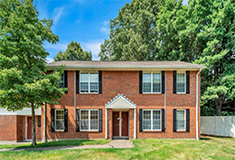News:
Connecticut
Posted: September 18, 2007
Design-build is a contracting method every owner should consider for their next project
Is your company running out of space? Did you just order a new production line with nowhere to put it? You're not alone. Growth continues to be strong in the area. One look at the current building inventory may lead you to consider a building addition or even a new modern facility. You need space and you need it fast.
Long gone are the days of a quick visit to the local building department for a permit. Today's building projects require months of designing, planning and approvals from various regulatory boards and commissions at the local level before construction can begin. State and federal approvals may also be required, depending on the size and complexity of the project. In most of the projects I am involved in, time schedules are as important as price. Time frames for today's projects continue to be reduced making it more difficult to employ a more traditional design- bid-build method.
In order to address these requirements and produce a facility in a fast track manner, many owners are turning to firms that specialize in design-build project delivery. Design-build allows an owner to wrap the design and construction services into one package. Many design builders have engineers, designers and construction managers on staff or they work closely with an independent architect or engineering firm to formulate a design-build team. Normally these firms are selected on past experience in the type of facility required. Whether commercial, industrial, institutional or residential, there is a team out there that's "been there and done that."
Contracting with a design-build firm can involve several different contract methods. Depending on the amount of time and information available to solicit a design-builder, the owner may elect to contract on a lump sum for the complete project or cost plus a fee with a guaranteed maximum price option.
No matter what type of design-build firm or method of contract the owner selects, the benefits are numerous and significant. They include the following:
Single Point of Responsibility
With both design and construction in the same hands, there is a single point of responsibility for quality, cost and scheduling allowing the owner to focus on scope, needs and timely decision making rather than coordination between designers and builders. Team work is fostered and essential to the success of any construction project.
Quality
The single responsibility inherent in design-build serves to motivate the contractor for quality and performance. The owner's requirements are documented in performance terms and the design-builder accepts responsibility to produce results accordingly.
Early Knowledge of Firm Costs
Because the entity responsible for design is simultaneously estimating the construction costs, guaranteed costs are known far earlier. Communication between the designer and estimator is direct and coordinated to accurately conceptualize the project. This can be extremely helpful with the staging of design expenditures.
Reduced Administrative Burden
During the actual design and construction, the owner is not required to invest time and money coordinating and arbitrating between separate design and construction contracts.
Cost Savings
During the design phase, designers and construction personnel continually evaluate alternative materials and methods. Value engineering is used continuously from schematic design documents to actual construction
Time Savings
When the design and construction are overlapped and the bidding period and redesign nearly eliminated, the total design and construction time can be significantly reduced. Design-build is ideal for fast track applications. The design-build contractor's ability to control the design process and flow of information will allow construction to commence while the design is being completed. The design-builder will also ensure that all required information will be made available to properly order the long-lead items that are on the projects critical path. Due to the single responsibility, the design-builder can handle field changes that arise quickly and efficiently.
Although design-build is not the solution for every project, it is a contracting method that every owner should consider for their next project. With careful selection of qualified design-builder, an owner can take advantage of an innovative process for designing and constructing facilities of high quality at a competitive cost, while establishing the valuable relationship required to maintain a physical plant for years to come.
Christopher Eseppi, P.E. is vice president of PDS Engineering & Construction, Inc., Bloomfield, Conn.
Tags:
Connecticut
MORE FROM Connecticut
CBRE brokers sale of Stamford Towers - 326,468 s/f Class A office
Stamford, CT The CBRE team of Jeff Dunne, Steve Bardsley, and Travis Langer, in collaboration with David Block, completed the sale of Stamford Towers, located at 680 & 750 Washington Blvd. CBRE represented the seller, CBRE Investment Management, and procured the buyer, a joint venture of Lamar Companies











.png)
